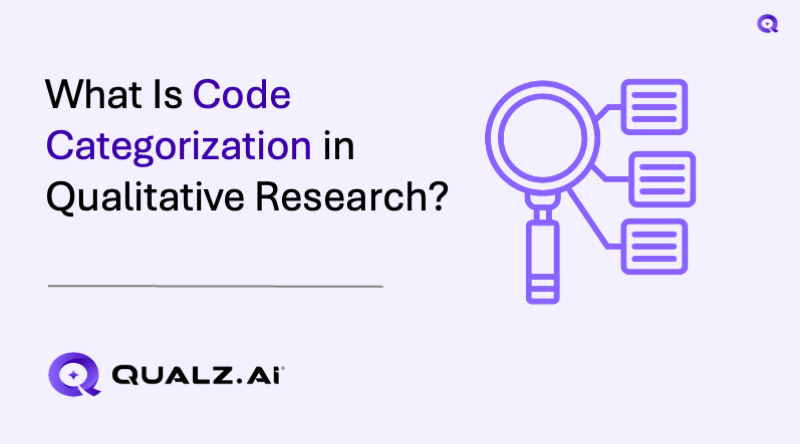In qualitative research, collecting rich, open-ended data is only the beginning. The real challenge and opportunity lies in making sense of that data. One of the most critical techniques in this process is code categorization.
Whether you’re a university researcher conducting interviews, a graduate student analyzing open-ended surveys, or part of a research team unpacking focus groups, understanding code categorization is essential to generating meaningful insights and publishing rigorously structured findings.
Topics Covered
ToggleWhat Is Code Categorization?
Code categorization refers to the process of grouping individual codes, short labels that describe segments of qualitative data into broader, more abstract categories or themes.
In simpler terms, after you tag or “code” pieces of interview transcripts, survey responses, or field notes, categorization helps you organize these codes into themes that reflect deeper patterns or concepts in your data. It’s the bridge between raw text and research insight.
For example:
- A code like “lack of feedback from supervisor” might fall under a broader category like “communication issues.”
- Multiple categories might eventually contribute to a larger theme like “organizational barriers to academic success.”
This layered approach—codes, categories, themes—is foundational in methods such as thematic analysis, grounded theory, and framework analysis.
Why Code Categorization Matters
Code categorization is a fundamental step in turning qualitative data into meaningful insight. Whether you’re conducting academic research, user interviews, policy analysis, or market research, the ability to organize data into structured categories allows you to uncover deeper patterns and themes. When done effectively, code categorization helps you:
- Make sense of large volumes of open-ended responses
- Identify key trends, concerns, or motivators across participants
- Support data-driven decision-making
- Communicate findings clearly to stakeholders or in written reports
It also enhances transparency and consistency in how insights are derived—especially when working in teams or across multi-phase studies. With a well-organized system of categories, your findings become more than just anecdotal—they become actionable, reliable, and scalable. For a deeper look into structured approaches, explore how a codebook supports effective categorization and analysis.
How Technology Can Support the Process
While manual methods like spreadsheets and desktop software still have their place, modern AI-powered tools are making code categorization faster, smarter, and more reliable.
Platforms such as Qualz.AI use natural language processing to:
- Automatically detect open codes in your data
- Group similar codes into thematic categories
- Visualize your results through interactive dashboards
What makes these tools especially valuable for academic research is their ability to generate a dynamic codebook alongside the categorization process. These codebooks include:
- Definitions and examples for each code
- Categorization hierarchies
- Saliency metrics like code frequency and relevance
A well-structured codebook ensures methodological rigor and makes it easier to defend your findings during thesis defenses, peer reviews, or journal submissions.
Conclusion: Code Categorization as the Key to Deeper Insights
Code categorization is more than just an organizational step—it’s the engine that drives clarity, structure, and meaning in qualitative research. By grouping your raw codes into coherent categories, you can uncover insights that would otherwise remain hidden in the noise of unstructured data. Whether you’re exploring complex social dynamics, understanding user behavior, or investigating institutional systems, code categorization empowers you to translate voices into themes and themes into knowledge. With modern AI tools now simplifying and accelerating this process—including features like automated codebooks and real-time visualizations—researchers can focus less on manual sorting and more on interpretation, theory-building, and impact.
In short, mastering code categorization isn’t just a technical skill—it’s an essential capability for anyone looking to produce rigorous, meaningful, and actionable qualitative research.
